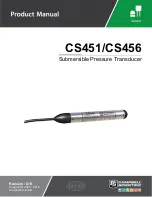
Page
4
of
25
You can also push something into the hole, while holding the soldering iron to it - something that solder doesn't like to
stick to. Some people have reported using sharpened wooden tooth picks for this purpose. I tend to use a thin sewing
needle. It often gets stuck in the hole but with care it is possible to gently pull it out, leaving a cleared hole that is suitable
for installation of the fresh component.
Where you have accidentally lifted a PCB trace, which can EASILY be done - you can repair the trace by running a thin
piece of copper wire along its route. Study the PCB trace diagram in the manual, and make sure that you reconnect the
lifted trace to everywhere it is supposed to be connected to. If a hole's through-hole plating comes out, don't worry - again
just wire up the connection instead. But be very careful, when replacing lifted traces or through-hole plating, be careful to
check on the PCB trace diagram, to see if there are connections on both sides of the PCB. Remember that the job of
through-hole-plating is to join the pads on each side of the board. If the pad at the top is connected to a trace, AND the
pad on the bottom side is connected to a trace, and the through-hole-plating got removed, then you need to make sure
you connect those two sides together. The easiest way in this case is to just apply solder above and below the PCB to
connect the wire of the component to the respective pads. It does NOT happen often, because on the QCX, most of the
traces are on the lower side of the PCB. But it is something to watch out for.
Signal tracing with an oscilloscope
Use a x10 probe when signal tracing. Some parts of the circuit are high impedance and a x1 probe will load them too
much and alter the function.
When using the 'scope probe be very careful that you don't accidentally create short-circuits to nearby component pins or
wiring!
Throughout the tracing, do not get too upset if your oscilloscope screen doesn't look exactly like my examples. There are
a myriad of possible reasons for this:
Your oscilloscope is lower quality than mine
Your oscilloscope is HIGHER quality than mine
Your 'scope probes are differently adjusted to mine
Even where you clip the ground lead, will make a difference in the observations...
Component tolerances and build differences mean amplitudes and waveform shapes may differ
Etc etc
RF is tricky stuff. Just get the general feel for it. Usually when there is a fault, it will be quite obvious - the results will be
VERY different to my examples, not just slightly different.
Digital section
You have GOT to sort this out first, everything depends on the microcontroller operating properly. We cannot go any
further, until it is working.
LCD all black blocks, or all blank
If the LCD looks like this, or it looks like that...





































